Encountering a mountain lion in the wild is both a thrilling and terrifying experience.
Also known as cougars, catamounts, panthers or pumas, these huge cats thrive in virtually all environments in the Americas, from southern Argentina to the Yukon. They’re one of the most widespread large land mammals in the Western Hemisphere.
In the United States, too, they’re very common and encounters between humans and mountain lions become increasingly frequent as more and more people enjoy the state and national parks in America.
In this post, I’ll talk about mountain lion safety and what to do when you see a mountain lion while hiking.
First of all, it’s important to know that mountain lion attacks are very rare. They do occasionally occur, though. When they do, they’re often a surprise and always frightening.
Therefore, you need to be aware of the animals’ presence when hiking in mountain lion habitat and know what to do during a mountain lion encounter.
This blog post about what to do during a mountain lion encounter contains affiliate links. You can read more about our Terms of Use / Disclosure here.
Contents
Mountain Lion Safety Tips While Hiking: What To Do & How To Behave
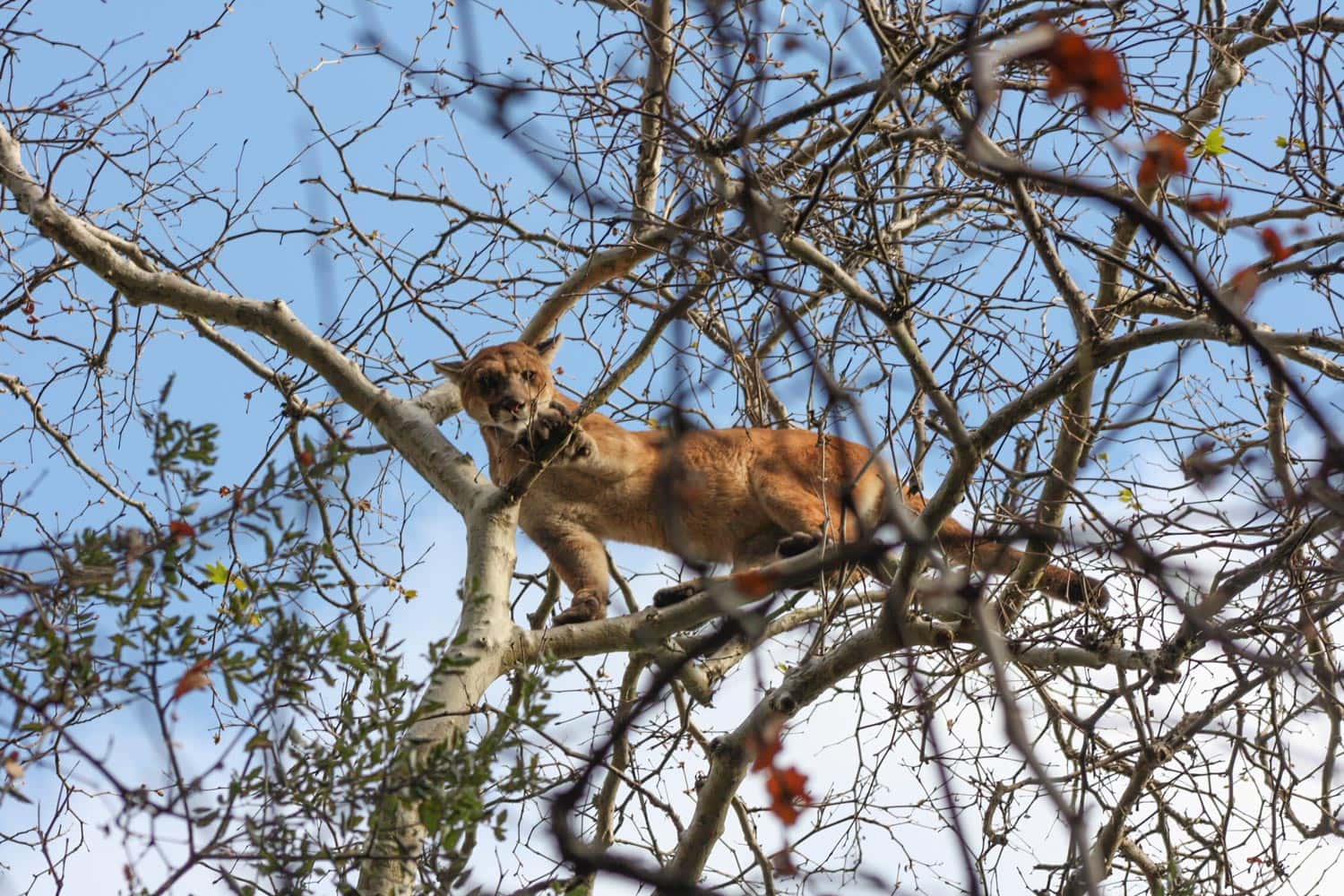
How To Avoid a Mountain Lion Encounter
Similar to avoiding black bear encounters or grizzly bear encounters, a mountain lion encounter can usually be avoided by making your presence known. When hiking in cougar country, it’s important to be aware of your surroundings and be loud.
Never hike with earphones or headphones. Talk loudly, sing, whistle or clap your hands regularly. This will let any animal in the area know that you’re a human and not a normal prey or predator.
Another great piece of advise is to not hike alone in mountain lion territory. A mountain lion will think twice about attacking two people, while one person might seem like an easy catch. Hiking in a group is even better.
Many cougar attacks occur in the morning or evening—dawn or dusk—when the animals are most active. However, mountain lion encounters in broad daylight are well-documented and do occur as well, especially around farms and by juvenile animals.
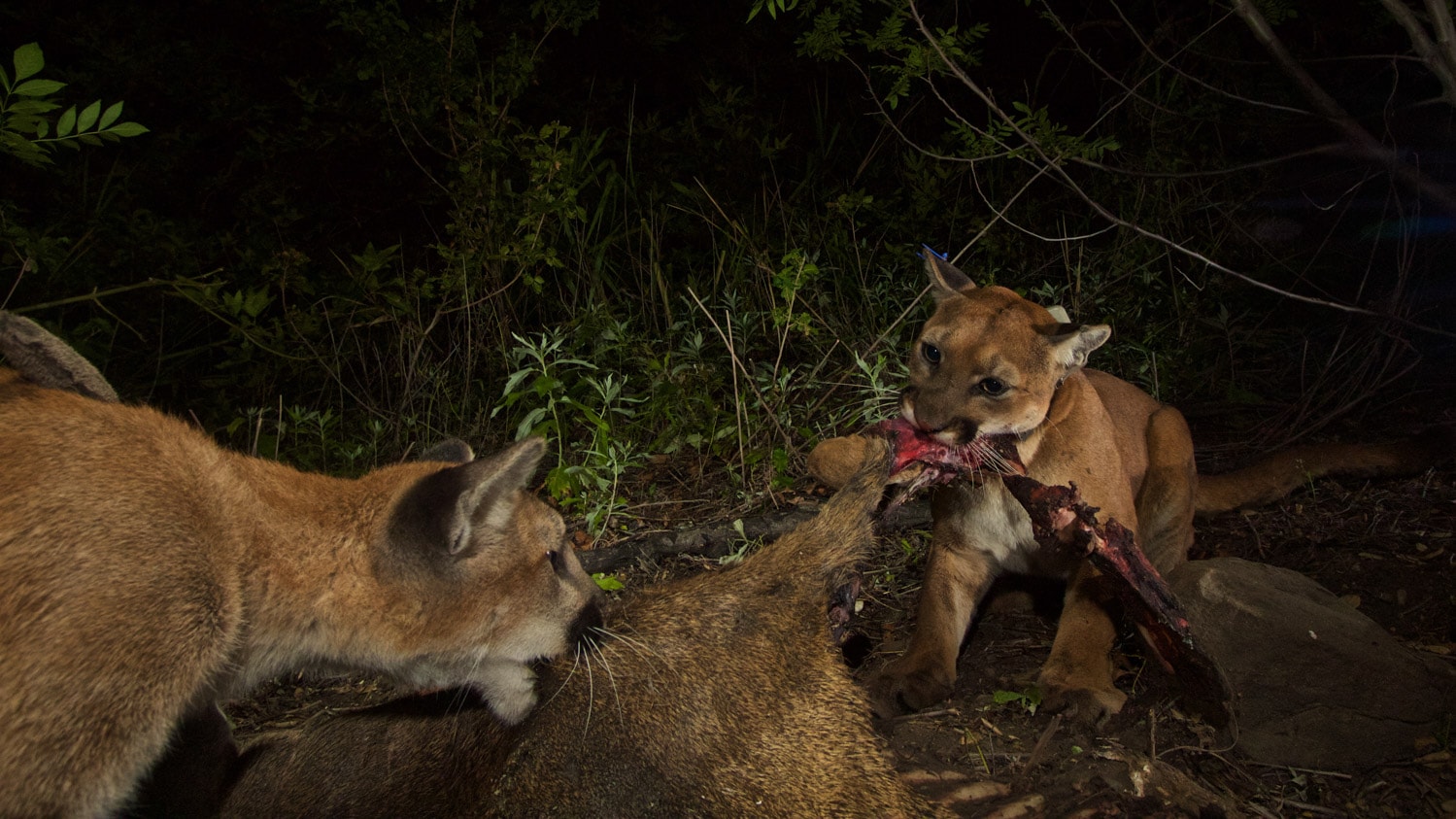
What To Do If You See a Mountain Lion
A mountain lion encounter in the wild is exceptional. I’d love for you to realize how fortunate you are to experience this, but it’s even more important to know what to do if you encounter a mountain lion. These are wild predators, after all. You have to take the situation seriously.
It’s also critical to know that mountain lions are stalkers. They’re very quiet and will typically track and follow their prey for a while before pouncing. You might, therefore, not even see a mountain lion attack coming.
Sometimes, however, they might come closer and show themselves, as they’re trying to figure out whether or not you’re a potential meal. Either way, when hiking in a region where mountain lions live, you have to let them know you’re not prey.
As mentioned above, you can do that by making noise and hiking in groups. Other tips for how to survive a mountain lion encounter are the following:
- Remain calm – Always hold your ground and walk away slowly, never turning your back to the animal. Keep facing the mountain lion and stand tall.
- Make yourself as big as possible – Lift up your backpack and hiking poles, pick up children, keep pets close and stand close to your fellow hikers. You can also waive your arms slowly and open your jacket. Try to appear intimidating. Never bend down or crouch.
- Give the cougar a way to escape – Never approach a mountain lion, particularly if it has kittens or is feeding.
- Never—ever!—run away – Deer are the favorite prey of mountain lions. Running away might make them think you are one. Again, never turn your back to a cougar.
- Be loud – Another essential tip for what to do if you encounter a cougar is making noise. Any way possible. Bang your water bottle, shout, yell, clap your hands. Make any sound that makes it clear you’re not prey. Speak slowly, never shriek.
- Throw things – If the animal doesn’t back away, start throwing things in its direction. That includes rocks, stones and branches. Do that without bending down or turning your back to it. First, try not to kit the cougar, since there’s no need to hurt it (yet). If it keeps moving toward you, throw things directly at the animal.
- Fight back! – In case the mountain lion attacks you, you have to fight back with all your might. Use whatever tools or weapons you have, from rocks and sticks to hiking poles, knives and even your bare hands. Plenty of people have successfully fought off a cougar before. Additionally, a mountain lion typically goes for its prey’s neck or head, so try to keep standing on your feet and face it.
Bear Spray Also Works on Mountain Lions
It may be called “bear spray”, but it also works on mountain lions. Whenever you’re hiking in places where cougars live, I strongly advise you to bring bear spray.
It’s the most effective way to deter wild animal attacks, so why not just make sure you have it with you?
Good Practices
- Know how to use your bear spray before heading into the backcountry.
- Practice using your bear spray with an empty can. Practice grabbing it, removing the safety with your thumb and spraying.
- Keep it accessible in a quick-draw holster, not stored somewhere in your backpack.
- It’s not necessary to be able to aim perfectly. Putting up a screen of spray between you and the mountain lion is often enough.
- Check the expiration date of your bear spray and make sure it’s EPA-approved.
- Never use bear spray like you would insect repellent. Do not spray it around your campsite before going to sleep. It does not work that way and might even attract wild animals to your site.
How to Use Bear Spray
When you’re trying to scare off an attacking mountain lion, bear spray almost always does the trick. Make sure you know you to use it properly, though. Cougar attacks are split-second events and you should be able to use your spray on auto-pilot.
- Remove the safety tag.
- Aim at the cougar’s face and keep in mind the direction of the wind.
- Continue spraying until the mountain lion leaves or changes direction.
- Spray directly into its face in case a mountain lion is about to physically attack you.
- Get out of the area as quickly as possible, without running.
Where To See Mountain Lions in the Wild
Super-adaptable animals, mountain lions live all over South, Central and North America.
While rare in the (north)eastern parts of the U.S., they’re abundant in the West. They live in all sorts of landscapes, from forests and mountains to wetlands and grasslands.
Because they stalk their prey, their preferred hunting grounds are open woodlands, edges of forests and grasslands with patches of trees. They like to hunt at dawn and dusk, which is when your mountain lion encounter chances are highest—if you’re looking for that.
Arguably the best place to see mountains lions in the wild in North America is Vancouver Island, Canada, which has the continent’s highest mountain lion density. The Santa Monica Mountains near Los Angeles, California are also well-known for their large mountain lion population.
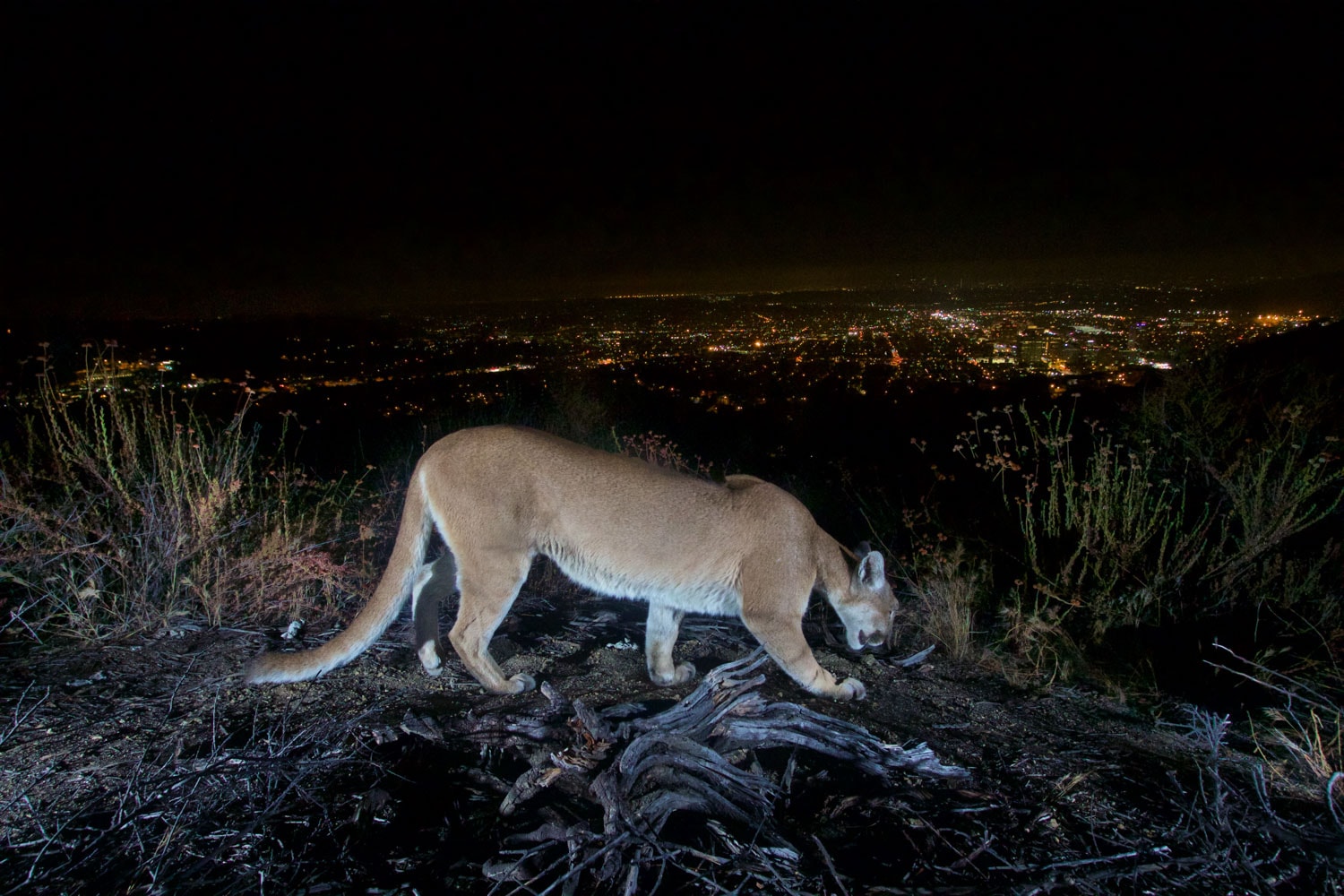
In the United States, they’re abundant in all western states, including Washington, Oregon and California, as well as Montana, Wyoming, Colorado, Arizona, Utah and Texas. Some national parks where you may encounter a cougar are:
- North Cascades National Park, Washington
- Mount Rainier National Park, Washington
- Olympic National Park, Washington
- Lassen Volcanic National Park, California
- Sequoia National Park, California
- Yosemite National Park, California
- Yellowstone National Park, Wyoming, Montana and Idaho
- Glacier National Park, Montana
- Rocky Mountain National Park, Colorado
- Grand Canyon National Park, Arizona
- Bryce Canyon National Park, Utah
- Big Bend National Park, Texas
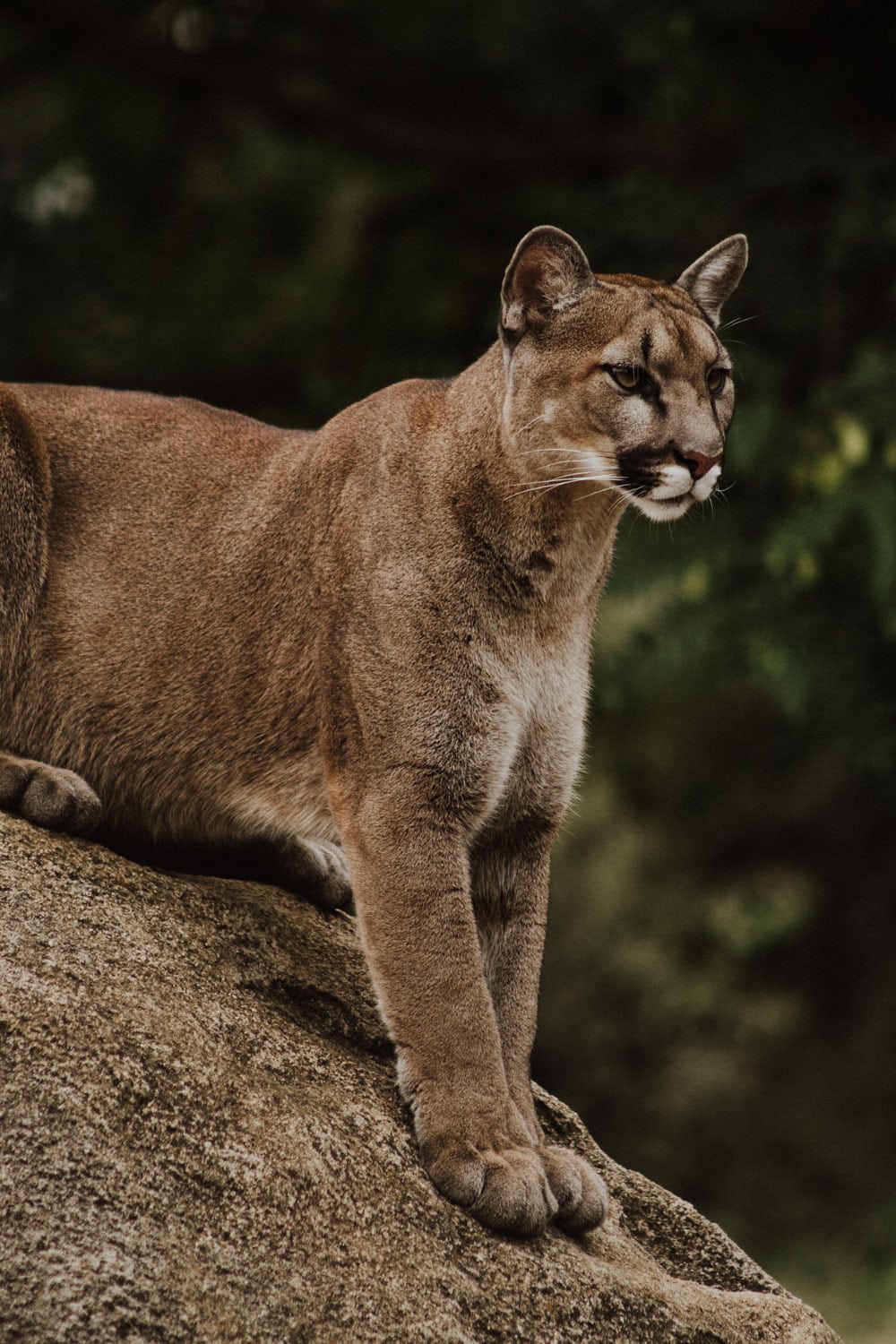
Recognizing a Mountain Lion or Cougar
There are a handful of wild cat species in America, including lynx, bobcats, jaguarundi and mountain lions. The latter are by far the most common and the easiest to distinguish.
Mountain lions are the largest cats in North America—the fourth-largest cat species in the world—and can grow up to 8 feet (2.5 meters) in length.
Despite their size, they’re generally not considered a “big cat” because they can’t roar (as opposed to lions, tigers and leopards). Instead, mountain lion sounds are pretty silent. They communicate via growls, purrs and hisses, much like domestic cats do.
You can recognize a cougar by its round head and erect ears, as well as its unusually long tail. If you see a wild cat with a tail that’s longer than its back legs, you can be 99% sure it’s a mountain lion.
In terms of skin color, mountain lions typically have a neutral, sand-like color—kind of like actual lions, which is one of the theories explaining their name.
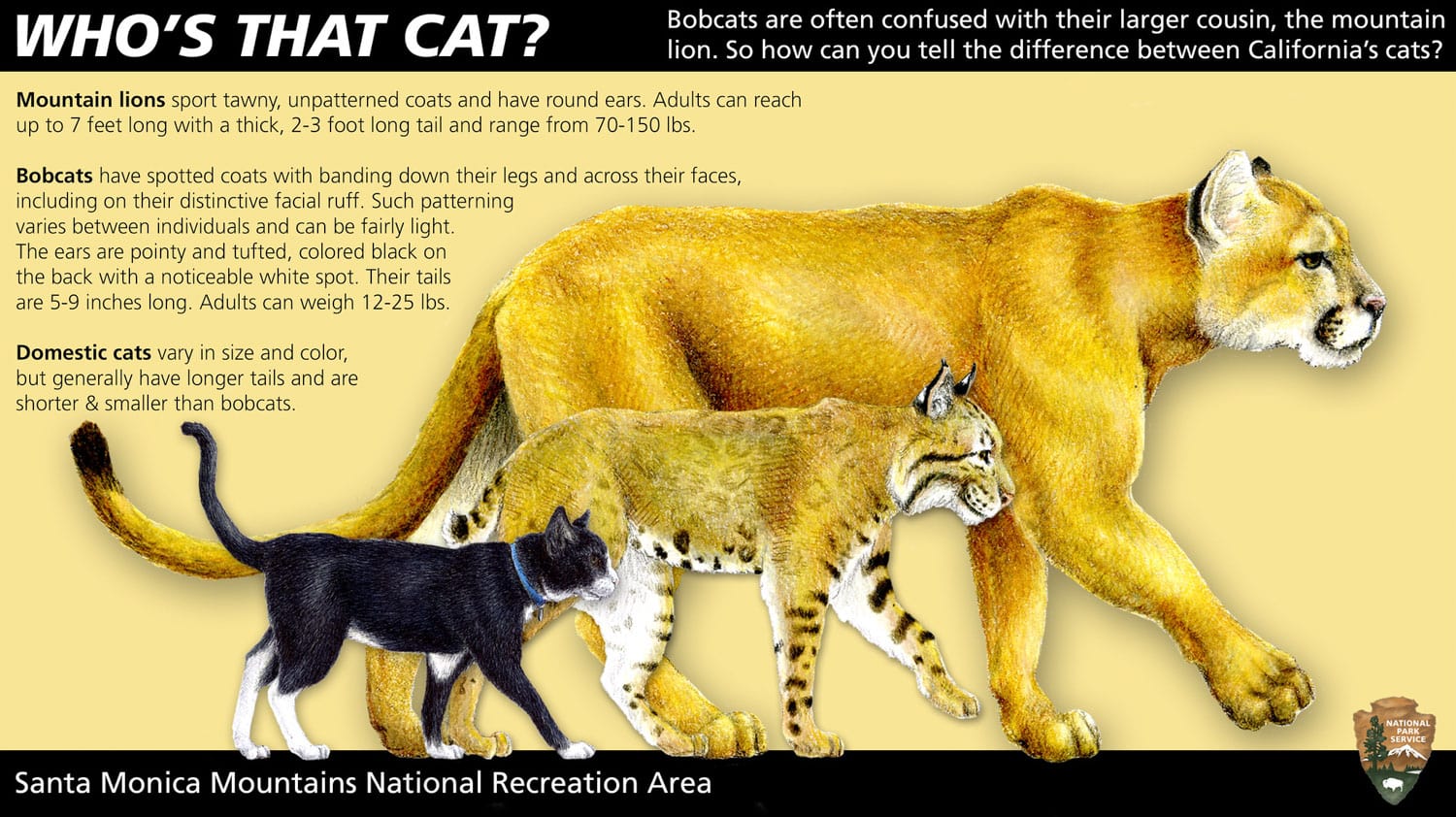
Aside from an actual mountain lion encounter, you can also know that you’re in mountain lion territory by looking for paw prints.
Like all cats, and opposed to canines like wolves and coyotes, cougars have retractable claws, which makes it fairly easy to distinguish their paw prints.
A mountain lion paw print consists of one large center sole print and four toe prints without the nail. An adult paw print of a cougar is about 4 inches (10 centimeters) long.
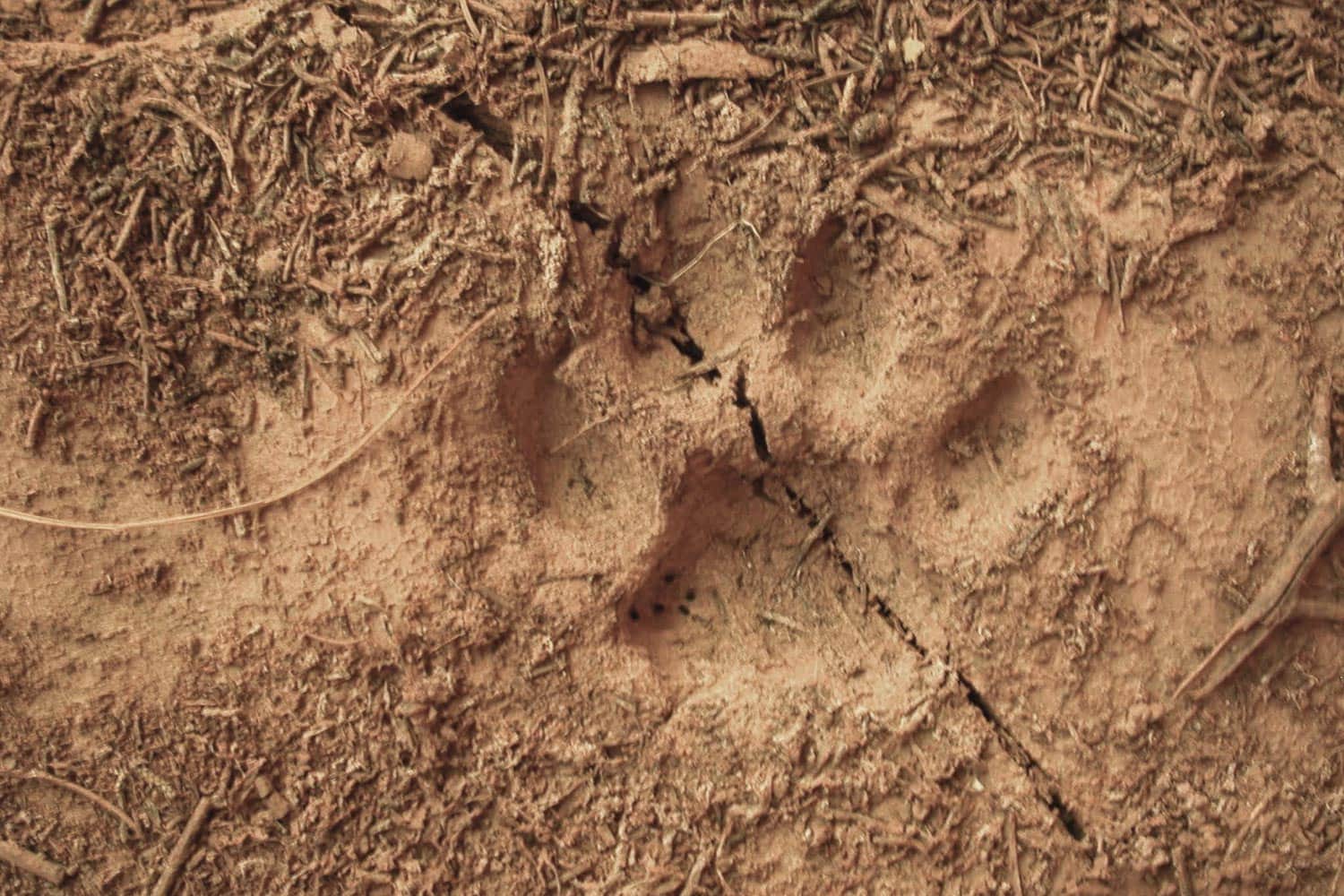
You can find much more information about everything related to mountain lions, including mountain lion protection, biology and behavior, on the website of the Mountain Lion Foundation.

Cheryl Zink
Wednesday 10th of November 2021
I was camping alone in November 2019 at Sly Park in Pollock Pines, California. I had caught a trout for dinner and after I ate it I was standing by the fire pit in the pitch dark. I suddenly heard a scream and a long loud hiss about 6 feet away. I slowly walked to my lantern to turn it on. The mountain lion had left the campsite and walked across the road and up to a hillside. I wanted to make sure he was gone so I shined my flashlight on the hillside and saw two big round red eyes! That was the scariest part! Then he screamed and hissed again so I slowly walked to my vehicle and turn my engine on and scan the hillside with my brights until he was gone. I actually felt bad that he came for my fish but I had already eaten it.
Bram
Saturday 20th of November 2021
Wow what a memorable experience, Cheryl! I'm sure that it was initially pretty scary, but once you let the occurrence sink in, I can imagine it's something you'll never forget. I'm glad no one got hurt, though, and both parties went their own way! Definitely shows that we're hardly ever alone when camping in a natural area, however busy it might seem.
solorzano ann
Wednesday 22nd of September 2021
I hike in areas where mountain lion warnings are posted, although never far from residential locations. I live in CA 95610, and frequent Folsom Lake from most entry points, as well as all along the American River. How likely am I to encounter a larger cat than what my dog and I would be able to properly fend off? Also, how many verified sightings have been recorded, in recent years, within the above mentioned areas? Thank you for a fascinating and educational article.
Bram
Tuesday 28th of September 2021
It seems like that area is, in fact, home to a population of mountain lions. So, there's always a small chance you might encounter one, although this is very unlikely. I do not have information about verified sightings, however, but I'd suggest contacting local authorities for more details.
Amber Ogborn
Sunday 15th of March 2020
I live on 80 acres, in Klamath National Forests on the Klamath River 15 miles south of Happy Camp, Ca. I'm sitting on my porch scrubbing some tires to be painted when all of a sudden I see my Shar-Pei, Buck hauling ass, tail tucked around the corner from the patio to the front porch. I look up and 10 feet in front of me is this Mountain Lion. I found my self more fascinated by this than scared but never the less hollered at my husband in the house and he came out and of course was like "H***S***". He stood there for at least a minute or two just looking at us as we were at him/her. Possibly his first sight of humans. Who knows. Then our livestock guardian dogs came down the hill and the chase was on. They had him stuck in a tree and we just fired a few shots to back the dogs off and get them corralled so the cougar could be on is way. We are in his house and unless he is really a threat or becomes one I just assume let him be.
Bram Reusen
Wednesday 22nd of April 2020
What an amazing experience, Amber. Thanks for sharing!!
Lauren
Sunday 2nd of February 2020
I was camping in Yosemite Superbowl weekend and had a mountain lion sighting on my way to the camps bathroom around 9pm at night. I thought that there was another camper with their headlamp on walking amongst the trees, which I thought was a little odd. As I approached the bathroom building, I could tell the “headlamp” was actual bright eyes of an animal. I could not believe what I was seeing, it almost felt like a hallucination but I was definitely panicked because I was aware of the unlikelihood of ever seeing one!!! The building’s light and my headlamp provided just enough light to be able to tell what it was, confirming that there was a long tail and it kept walking slowly and slinky like a cat. The eyes were so bright, so spooky! A few days later, I am still trying to comprehend and revisit that moment.
Bram Reusen
Sunday 2nd of February 2020
Wow, what a memorable experience that must have been. Mountain lions are actually quite abundant in the Western states, but, like you say, actually seeing one is pretty rare. Consider yourself lucky! Thanks for sharing your experience :-)
Jason
Saturday 26th of October 2019
I shined my 8000 lumen flashlight on the strobe mode. The light reflected off his eyes. The dog noticed him at this point. The cougar didn't react right away. It took him 10 or more seconds to realize what was going on. he took off. He ran (looked the size of a house cat from where we were). I could see it was a cat when he was running. He turned to run down a side trail. I saw the tail. He was a black mountain lion. I would guess pretty big and male. We had to walk past the spot where he was. I had the dog leashed and was shining my light in the woods just to be safe. I stopped hiking there after that for a while. I went back several months later and I knew he wasn't there anymore because the dog was relaxed.
Most of the info I have found on mountain lion safety tends to be generic. What I have learned is that they are most active at dusk. Not sure about dawn. Not a morning person. But they like to hang out around the trails almost anytime. Especially on nice days. Not sure why? The worst thing you can do is hike the same spot daily and have them get use to you. That is when the juveniles will follow you. If you do get followed let them know you are not prey. A flashlight works like a charm as a deterrent. It regards to dogs. When they get the scent they will let you know. You have to pay attention. Your dog will never let you walk underneath a cougar. This reaction will be completely different. If he just gets the scent he will let you know he does not want to go further. If you get real close he will not let you walk by, and he will not walk by.